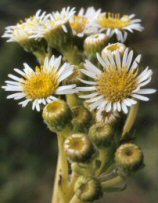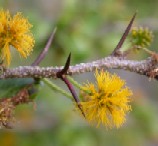UK Overseas Territories
- Home
- UK
Overseas Territories
- Biodiversity
- Threats
- Kew's historical links
- Ascension
- Anguilla
- Bermuda
- British Antarctic Territory
- British Indian Ocean Territory
- British Virgin Islands
- Cayman Islands
- Falkland Islands
- Gibraltar
- Montserrat
- Pitcairn Islands
- South Georgia
- Sovereign Base Areas on Cyprus
- St Helena
- Tristan da Cunha
- Turks and Caicos Islands
- Conservation activities
- Capacity Building
- Community involvement
- Links
- Contacts
UK Overseas Territories Programme

Biodiversity of the UK Overseas Territories |
| The UK’s 16 Overseas
Territories (UKOTs) support more biodiversity than the whole of
the UK mainland. At least 180 endemic plant species (species which
are restricted to a particular region) are already known from the
UKOTs, compared to around a dozen on the UK mainland. As some parts
of the Territories have never been explored botanically, there are
undoubtedly many plant species as yet unknown. The UKOTs encompass many diverse habitats ranging from the icefields of the British Antarctic Territory to the coral reefs and tropical forests of the British Indian Ocean Territory and the British Virgin and Cayman Islands. The UK and Territory Governments bear joint responsibility for conserving and protecting the rich natural heritage of the UKOTs and are working together to meet obligations under international environmental conventions. |
Fascinating facts |
|
 |
St Helena (122 sq
km) has 49 endemic plant species and 10 endemic genera, most of
which comprise just one species (monospecific). |
Although only two flowering
plants grow in the British Antarctic Territory, there are more than
100 mosses and 300-400 different lichens. Ascension Island has just 25 native higher plant species. Six of these are unique ferns, all of which are considered to be rare or endangered. |
|
Latest UKOTs plant biodiversity news |
|
|
On a recent field trip to the British Virgin Islands, Kew botanists discovered specimens of Acacia anegadensis growing on the uninhabited island of Fallen Jerusalem. Previously, this species had only been known from Anegada. This exciting new find, on a completely different island, means that the species has an increased chance of survival in the wild. Another rediscovery took place in the Cayman Islands in 2007, when the Cayman sage (Salvia caymanensis) was spotted growing near a road on Grand Cayman. Local conservationists had believed that this species had become extinct. Seeds of the Cayman sage have been collected for storage in the Millennium Seed Bank. |
|
|
Find out more about biodiversity in the UKOTs: Joint Nature Conservation Committee - Biodiversity:
the UK Overseas Territories |


